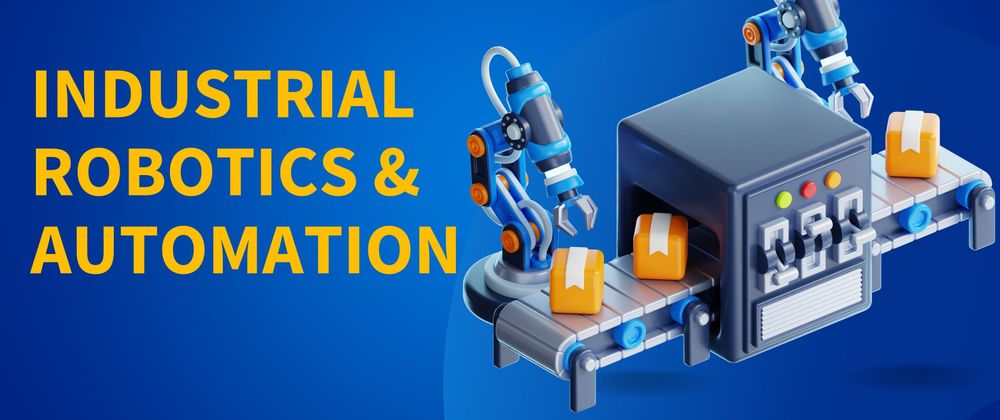Thus, the partnership of industrial robots is one wherein applications of industrial robots incorporate assembly and precision engineering-related processes for efficient, safe, and cost-effective production. Due to the growing need for automating industrial processes, the implementation of Robotic Process Automation (RPA) Services with industrial robotics is gaining importance so that enterprises can achieve maximum efficiency in carrying out physical and digital processes.
This blog shall explore the leading industrial robots, their main industrial applications, and ways in which businesses can benefit from web automation services, custom RPA development, and hyperintelligent automation to retain their standing in a digital-first world.
Understanding Industrial Robots
Industrial robots are programmable machines capable of fulfilling complex tasks with speed and precision. Unlike conventional machines, they offer high levels of flexibility and can be integrated into different stages of manufacturing, packaging, inspection, and warehouse management.
But the use of these robots is not limited only to large industries. Small and medium enterprises, or SMEs, are also benefiting from robotic systems with the emergence of automation technologies, especially when joined with smart software-based solutions like RPA and hyper automation.
Key Types of Industrial Robots
1. Articulated Robots
The articulated arms robots are one of the most famous kinds in use in the industry. They work with rotary joints that permit movement along several axes, thus mimicking the motion of a human arm.
Applications:
In Welding in automotive manufacturing
Material handling
Machine loading/unloading
Painting and coating tasks
RPA Integration:
These robots can be integrated within RPA custom development solutions for data handling of production lines, monitoring of outputs, and auto-generation of maintenance requests upon detection of an anomaly.
2. SCARA Robots (Selective Compliance Assembly Robot Arm)
It applies to high-speed, high-precision tasks for the SCARA types of robots. It has limited flexibility but is extremely effective at lateral movements.
Applications:
Electronic assembly
Pick-and-place tasks
Packaging
Insertion of small components
Web Automation Services Use Case:
Data acquired by SCARA robots during electronics manufacturing will be sent to cloud-based quality control systems through web automation services for immediate compliance and error reduction.
3. Delta Robots
The Delta robots attain such feats of speed because they are also lightweight. A Delta Robot is suitable for sorting, packaging, or assembling small parts.
Applications:
High-speed pick and place operations
Food and pharmaceutical packaging
Lightweight material handling
Hyper Intelligent Automation Edge:
In this hypersmart and hyperautomation services environment, a Delta robot recognizes defects through machine vision, sorts accordingly, and delivers actionable analytics with relevance to the operations.
4. Cartesian Robots
These robots move linearly along the X, Y, and Z axes, providing precise movements with a simple and clean design.
Applications:
CNC machinery
3D printing
Laser cutting
Automated drawing and part transfers
RPA Services Integration:
Robotic Process Automation (RPA) services can be deployed to interact and exchange data between Cartesian robots and ERP systems, ensuring that inventory is correctly kept and minimizing human errors.
5. Collaborative Robots (Cobots)
Collaborative robots share the workspace with human operators. They are equipped with sensors and AI algorithms to protect their human operators and to react to human interaction.
Applications:
Assembly assistance
Screwing, gluing, polishing
Medical and laboratory tasks
RPA Custom Development Synergy:
The combined forces of cobots and RPA custom development enable the automation of both physical and digital workflows—for instance, putting together a component while logging the quality test results into a cloud database.
Real-World Industrial Applications
The use of industrial robots spans many sectors. Let's explore, briefly, some examples:
Automotive Manufacturing
Robots tend to perform welding, painting, and assembly of car parts. Through automation, standard outputs are ensured, while real-time production parameters are tracked and analyzed using RPA tools.
Electronics and Semiconductors
Precision is provided here. SCARA and Cartesian robots handle delicate parts, with web automation services updating processes across global supply chains.
Healthcare and Pharmaceuticals
Packaging pills or for laboratory testing, industrial robots increase throughput and hygiene. Integrated RPA services maximize compliance by maintaining automated logs and audit trails.
E-commerce and Warehousing
Robot arms and AMRs sort and move packages, while hyper-intelligent automation schedules delivery, reports to consumers, and updates inventory.
Industrial Robots Meet Digital Automation
Despite the availability of industrial robots to handle manual work, the back-end also needs to evolve. This is where Robotic Process Automation and hyper-intelligent automation come into play.
Here's how they complement industrial robotics:
1. Data Synchronization Without a Hitch
Modern factories generate massive data-from robot metrics to production cycles. An RPA bot can ingest this data, analyze it, and distribute it to different business units, resulting in error-free operations.
2. Predictive Maintenance
Monitoring robot health, scheduling preventive maintenance, and even ordering spare parts can be taken care of by RPA with a touch of machine learning, lessening downtime by quite a bit.
3. Compliance and Reporting
In pharma and food industries, strict compliance is non-negotiable. RPA helps in real-time report generation, batch tracking, and audit-ready documentation provision.
4. Better Human-Robot Collaboration
Hyper-intelligent automation fills the gap between humans and machines. By integrating AI, NLP, and RPA, companies can create smart interfaces through which human operators can command robots in natural language or via intuitive dashboards.
Future Trends: Where Are We Headed?
AI-Augmented Robotics: Robots will increasingly use AI for vision, language, and decision-making.
Edge Computing: Robots processing data on-site rather than relying on cloud latency.
Custom Automation Solutions: With RPA custom development, companies can build tailor-made automation pipelines for their unique needs.
Sustainable Manufacturing: Robots programmed for energy efficiency and zero-waste protocols.
Conclusion
This industrial world is going through a paradigm shift where hardware and software automation have joined forces to create a smart, responsive, and data-driven environment. Businesses that embrace this paradigm shift by investing in both industrial robotics and advanced RPA services set themselves up as future-ready leaders.
Whether you are a manufacturing giant or an emerging enterprise, embedding web automation services, RPA custom development, and hyper intelligent automation services in your operational framework will surely increase efficiency while promoting innovation, accuracy, and long-term growth.




Top comments (0)